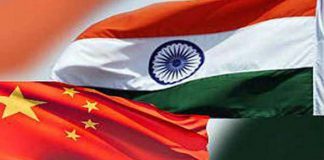JANUARY 18, 2021

The Department of Telecommunications (DoT) has sought inputs from telcos and other industry experts on the sale and use of radio frequency spectrum over the next 10 years, including the 5G bands.
What is 5G technology and how is it different?
5G or fifth generation is the latest upgrade in the long-term evolution (LTE) mobile broadband networks. 5G mainly works in 3 bands, namely low, mid and high frequency spectrum — all of which have their own uses as well as limitations.
While the low band spectrum has shown great promise in terms of coverage and speed of internet and data exchange, the maximum speed is limited to 100 Mbps (Megabits per second). This means that while telcos can use and install it for commercial cellphone users who may not have specific demands for very high speed internet, the low band spectrum may not be optimal for specialized needs of the industry.
The mid-band spectrum, on the other hand, offers higher speeds compared to the low band, but has limitations in terms of coverage area and penetration of signals. Telcos and companies, which have taken the lead on 5G, have indicated that this band may be used by industries and specialized factory units for building captive networks that can be moulded into the needs of that particular industry.
The high-band spectrum offers the highest speed of all the three bands, but has extremely limited coverage and signal penetration strength. Internet speeds in the high-band spectrum of 5G has been tested to be as high as 20 Gbps (giga bits per second), while, in most cases, the maximum internet data speed in 4G has been recorded at 1 Gbps.
Where does India stand in the 5G technology race?
On par with the global players, India had, in 2018, planned to start 5G services as soon as possible, with an aim to capitalise on the better network speeds and strength that the technology promised.
All the three private telecom players, Reliance Jio Infocomm, Bharti Airtel and Vi, have been urging the DoT to lay out a clear road map of spectrum allocation and 5G frequency bands, so that they would be able to plan the roll out of their services accordingly. One big hurdle, however, is the lack of flow of cash and adequate capital with at least two of the three players, namely Bharti Airtel and Vodafone Idea.
On the other hand, Reliance Jio plans to launch an indigenously built 5G network for the country as early as the second half of this year. The company is said to have a complete end-to-end 5G solution prepared by the company itself that is ready for deployment once the networks are in place. This solution can also be deployed by other telecom operators as a complete managed service.

What is the global progress on 5G?
More than governments, global telecom companies have started building 5G networks and rolling it out to their customers on a trial basis. In countries like the US, companies such as AT&T, T-mobile, and Verizon have taken the lead when it comes to rolling out commercial 5G for their users.
While some such as AT&T had started testing and deploying the technology as early as 2018, other companies such as Verizon have followed suit, expanding their 5G ultra-wide broadband services to as many as 60 cities by the end of 2020. In other countries such as China, some of the telcos such as China Unicom had started 5G trials as early as 2018, and have since rolled out the commercial services for users.
South Korean company Samsung, which had started researching on 5G technology way back in 2011, has, on the other hand, taken the lead when it comes to building the hardware for 5G networks for several companies.
Courtesy/Source: Indian Express










































































































